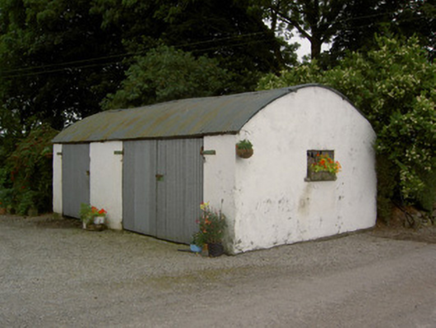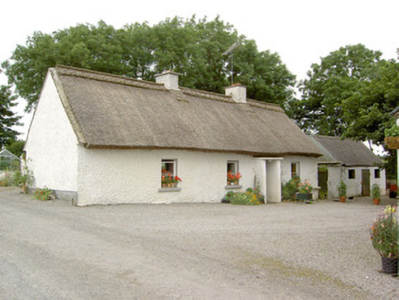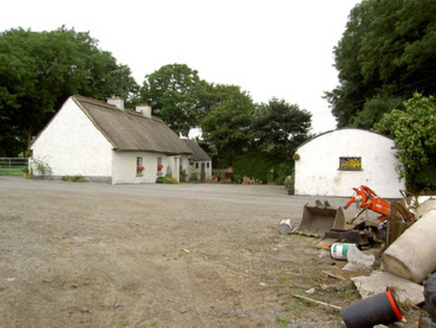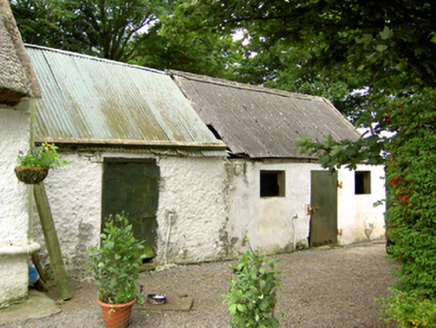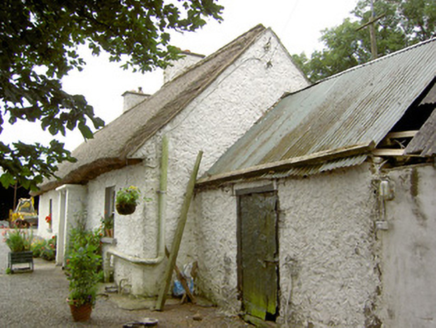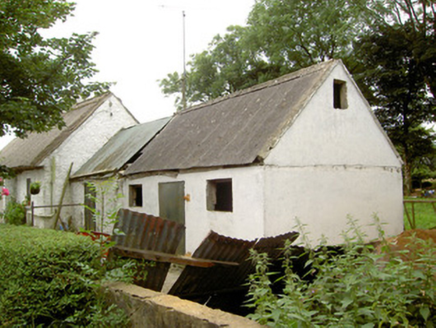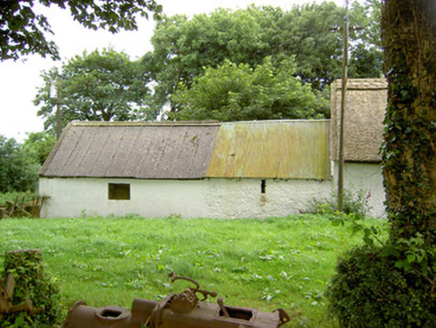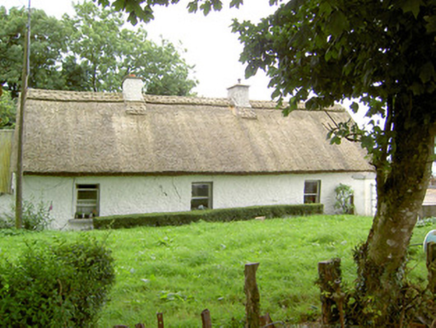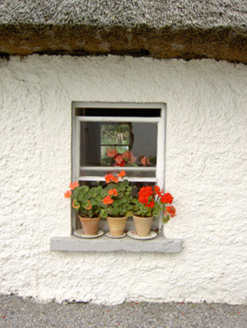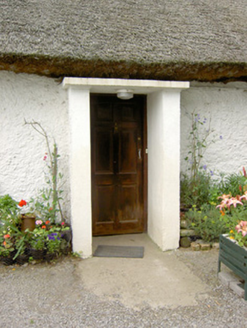Survey Data
Reg No
13401910
Rating
Regional
Categories of Special Interest
Architectural, Technical
Original Use
House
In Use As
House
Date
1780 - 1820
Coordinates
216867, 266871
Date Recorded
21/07/2005
Date Updated
--/--/--
Description
Detached four-bay single-storey thatched house, built c. 1800, having modern open flat-roofed windbreak porch to centre of main elevation (south) and two-single-storey outbuildings attached to the east gable end. Pitched thatch roof with ropework to ridge and having two pebbledashed chimneystacks offset to the centre. Painted roughcast rendered walls with painted smooth render finish to porch. Square-headed window openings with painted stone sills and one-over-one timber sliding sash windows. Recessed square-headed door opening with timber panelled door. Two attached outbuilding additions to east of house, having corrugated-metal and corrugated-asbestos roofs with painted roughcast rendered and smooth rendered walls respectively, one having an attic storey. Outbuilding to south of site having barrel-vaulted corrugated-metal roof and painted smooth rendered walls. Aligned at a right-angle to the road alignment, west gable end facing road. Set back from road in rural landscape to the southwest of Ardagh.
Appraisal
This thatched house at Castlerea Mountain is one of the best surviving examples of its type still extant in County Longford. Well-maintained, it retains its early form, character and much of its early fabric. Modest in scale and form, this house exhibits the simple and functional form of vernacular building in Ireland. Of particular significance is the survival of the thatched roof, which is now rare in County Longford making this an important surviving example. This building is set at a right-angle to the road alignment, which is a characteristic feature of the Irish vernacular tradition. This building faces to the south to avail of the natural heat of the sun - Irish vernacular buildings are often sited to take advantage of local topography (natural shelter from prevailing winds etc.). The form of this building suggests that it may have been extended to the west at some stage, while the position of one of the chimneystacks, which is roughly in line with the entrance, hints that this building may have the lobby-entry plan that is characteristic of vernacular buildings in the midlands of Ireland. The site is additionally interesting as a record of the evolution of vernacular roofing materials from thatch to corrugated-metal and asbestos. Buildings of this type were once a ubiquitous feature of the rural Irish landscape but are now becoming increasingly rare. This modest building is an integral element of the built and vernacular heritage of Longford, and it adds appeal to its rural location.
